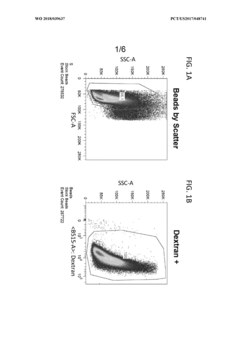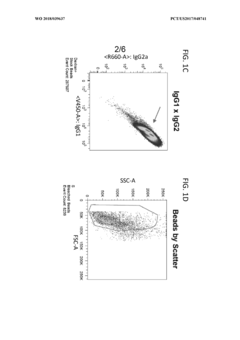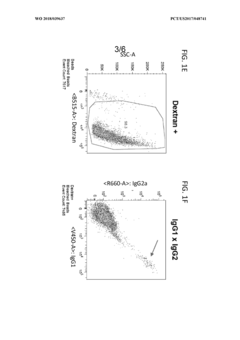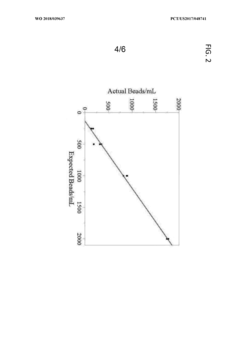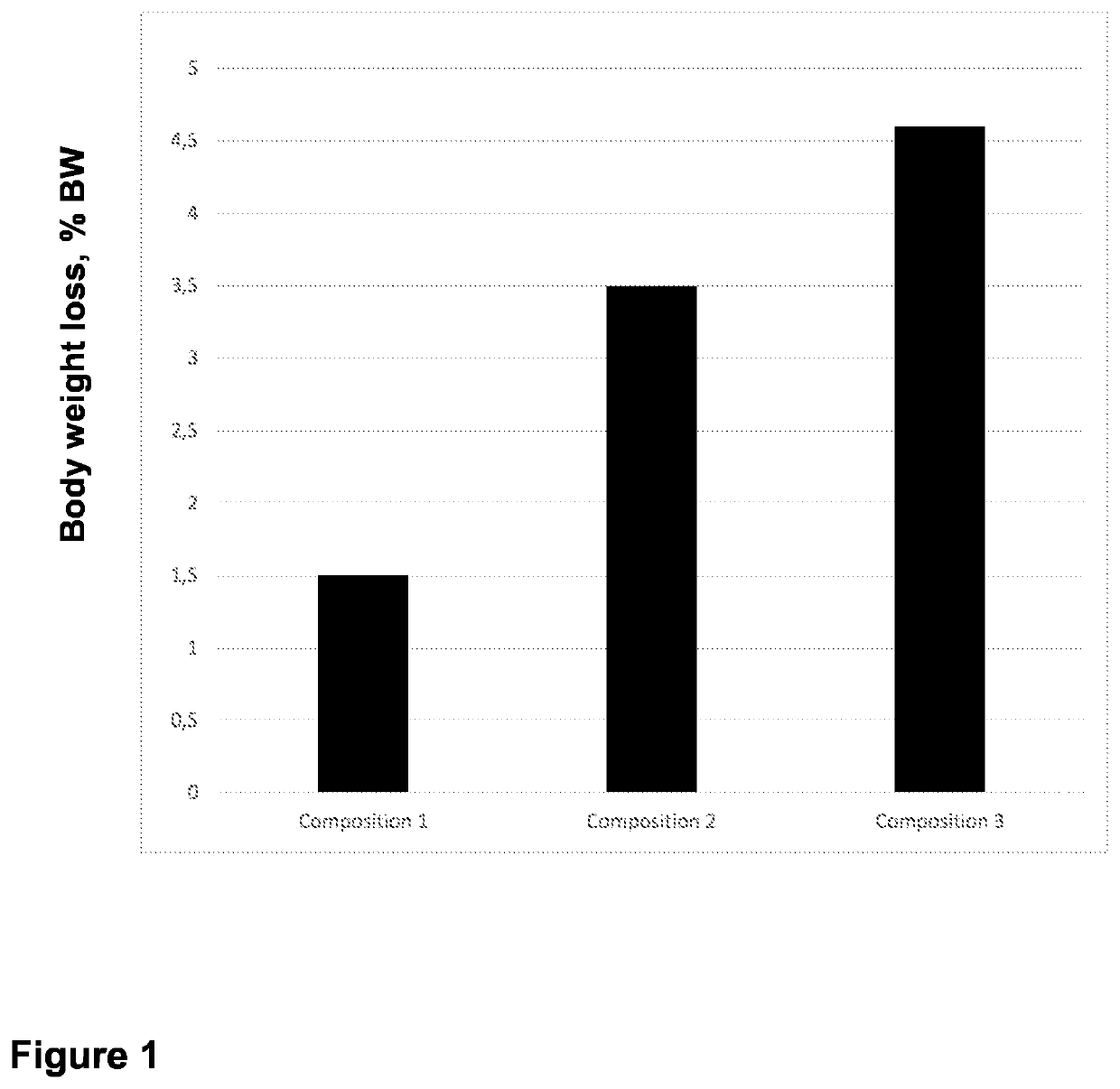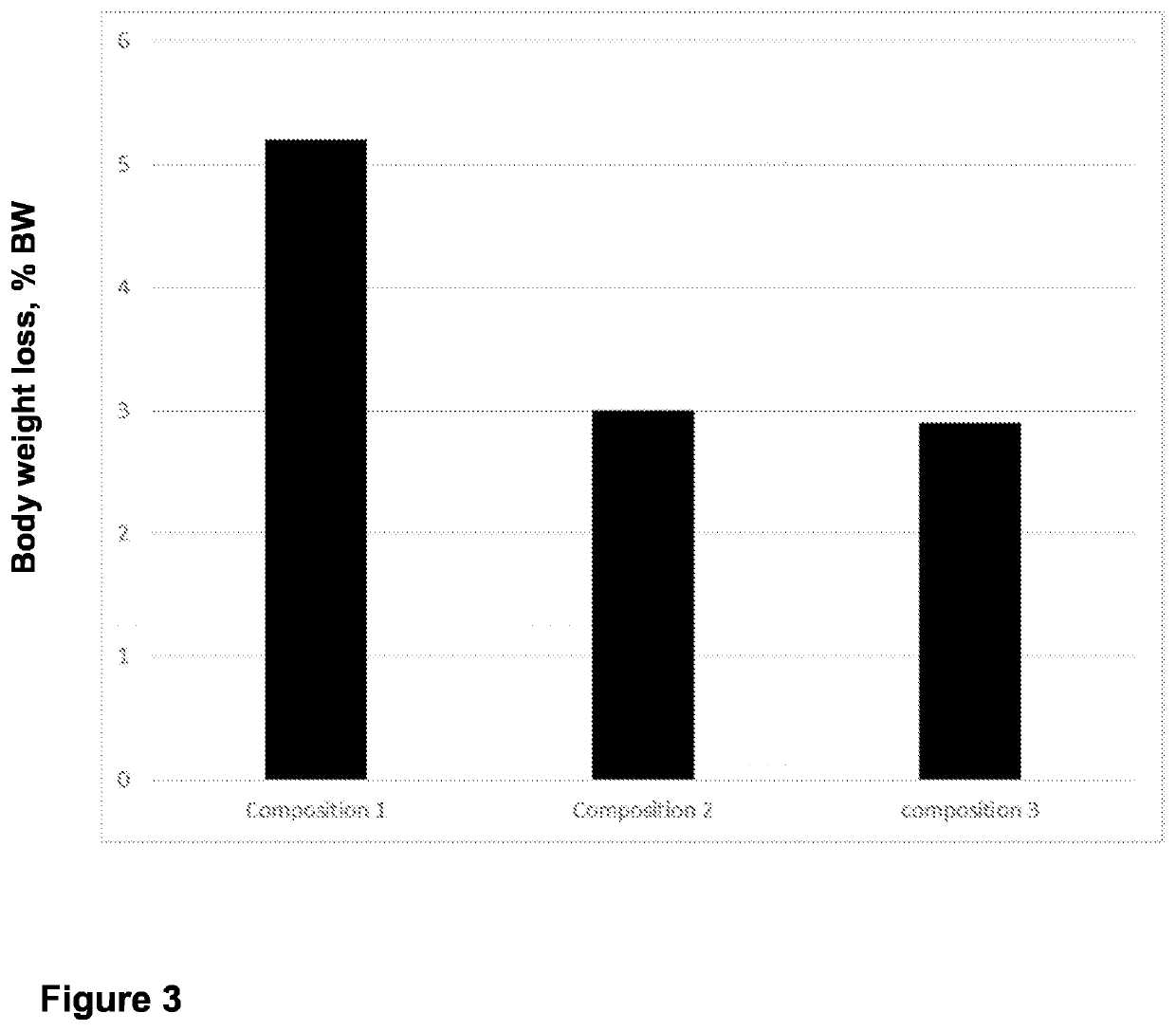What Is The Difference Between Hypertonic And Hypotonic?
Osmotic Solutions Background
Osmotic solutions have played a crucial role in various scientific and medical applications for centuries. The concept of osmosis, first described by Jean-Antoine Nollet in 1748, forms the foundation for understanding the behavior of hypertonic and hypotonic solutions. These solutions are characterized by their solute concentration relative to the surrounding environment, particularly in biological systems.
The study of osmotic solutions gained significant momentum in the 19th century with the work of Wilhelm Pfeffer and Jacobus van 't Hoff. Their research laid the groundwork for understanding osmotic pressure and its effects on cell membranes. This knowledge has since become fundamental in fields such as biology, medicine, and chemical engineering.
Hypertonic and hypotonic solutions are defined based on their solute concentration compared to a reference solution, typically the cytoplasm of a cell. The movement of water molecules across semipermeable membranes, driven by differences in solute concentration, is the key principle distinguishing these solutions. This process is essential for maintaining cellular homeostasis and has wide-ranging implications in both natural and artificial systems.
In biological contexts, the concept of tonicity is closely related to osmolarity but takes into account the permeability of the cell membrane to specific solutes. This distinction is crucial for understanding the physiological effects of different solutions on living cells and tissues. The development of isotonic solutions, which have the same effective osmotic pressure as body fluids, has been a significant milestone in medical science, enabling safe intravenous therapies and cell preservation techniques.
The applications of hypertonic and hypotonic solutions extend beyond biology and medicine. In agriculture, understanding osmotic principles has led to improved irrigation techniques and the development of drought-resistant crops. In industrial processes, osmotic gradients are utilized in desalination plants, food preservation, and various separation technologies.
Recent advancements in nanotechnology and materials science have opened new avenues for exploiting the properties of hypertonic and hypotonic solutions. For instance, osmotic drug delivery systems leverage the principles of tonicity to control the release of therapeutic agents. Similarly, osmotic power generation, which harnesses the energy potential of mixing fresh and salt water, represents an emerging field in renewable energy research.
As we continue to explore the complexities of osmotic solutions, the distinction between hypertonic and hypotonic states remains a fundamental concept. This understanding not only informs current scientific and medical practices but also drives innovation in diverse fields, promising new solutions to global challenges in health, agriculture, and sustainable technology.
Market Applications Analysis
The market applications for hypertonic and hypotonic solutions span various industries, with significant potential in healthcare, agriculture, food processing, and biotechnology. In the healthcare sector, hypertonic solutions are widely used in medical treatments such as reducing intracranial pressure, treating edema, and managing certain types of shock. These solutions have a higher concentration of solutes compared to body fluids, drawing water out of cells and tissues. This property makes them valuable in emergency medicine and critical care settings.
Conversely, hypotonic solutions find extensive use in rehydration therapies, particularly in cases of dehydration or electrolyte imbalances. Their lower solute concentration allows water to move into cells, making them effective for treating conditions like heat exhaustion or mild dehydration. The sports drink industry has capitalized on this, developing products that help athletes maintain proper hydration during intense physical activities.
In agriculture, both types of solutions play crucial roles. Hypertonic solutions are used in soil management to control salinity levels, while hypotonic solutions are employed in irrigation systems to optimize water absorption by plants. This application is particularly important in regions facing water scarcity, as it allows for more efficient use of limited water resources.
The food processing industry utilizes the principles of hypertonic and hypotonic solutions in preservation techniques. Hypertonic environments created by high salt or sugar concentrations inhibit microbial growth, extending the shelf life of various food products. On the other hand, hypotonic solutions are used in processes like osmotic dehydration, where water is removed from foods to enhance preservation while maintaining flavor and nutritional value.
In biotechnology and pharmaceutical research, understanding the behavior of cells in hypertonic and hypotonic environments is crucial for developing new drug delivery systems and cell culture techniques. Hypertonic solutions are used in cryopreservation processes to protect cells during freezing, while hypotonic solutions are employed in certain cell lysis procedures for extracting cellular components.
The global market for products and technologies related to hypertonic and hypotonic solutions is experiencing steady growth. This growth is driven by increasing healthcare expenditures, advancements in biotechnology, and the rising demand for specialized agricultural solutions. As research continues to uncover new applications, the market is expected to expand further, particularly in emerging economies where healthcare and agricultural sectors are rapidly developing.
Hypertonic vs Hypotonic Challenges
The challenges associated with hypertonic and hypotonic solutions primarily stem from their effects on cellular osmosis and the potential consequences for biological systems. Hypertonic solutions, characterized by a higher solute concentration compared to the cell's interior, pose risks of cellular dehydration and shrinkage. This can lead to plasmolysis in plant cells and crenation in animal cells, potentially disrupting cellular functions and structural integrity.
Conversely, hypotonic solutions, with lower solute concentrations than the cell's interior, present challenges related to excessive water influx into cells. This can result in cell swelling, potentially leading to lysis or bursting in extreme cases. In plant cells, this manifests as turgor pressure, which is essential for structural support but can become problematic if excessive.
One significant challenge in working with hypertonic solutions is maintaining proper cellular hydration, particularly in medical applications such as intravenous therapies. Overly hypertonic solutions can cause rapid fluid shifts, leading to electrolyte imbalances and potentially severe dehydration at the cellular level. This is especially critical in sensitive tissues like the brain, where rapid osmotic changes can have serious neurological consequences.
Hypotonic solutions, while less commonly used in medical settings, present challenges in scenarios where cellular integrity is crucial. For instance, in laboratory cell culture, exposure to hypotonic conditions can compromise experimental results by altering cell morphology and function. In clinical settings, accidental administration of hypotonic solutions can lead to hemolysis of red blood cells, potentially causing severe complications.
Both hypertonic and hypotonic conditions pose challenges in food preservation and processing. Hypertonic environments are often used to inhibit microbial growth, but excessive use can lead to undesirable changes in food texture and flavor. Hypotonic conditions, while less common in food preservation, can lead to microbial proliferation and food spoilage if not properly managed.
In environmental and agricultural contexts, plants and microorganisms must constantly adapt to fluctuating osmotic conditions. Extreme hypertonic or hypotonic environments can stress organisms, affecting growth, reproduction, and overall ecosystem balance. This is particularly relevant in areas facing increasing soil salinity or in aquatic environments subject to pollution or climate change-induced alterations in water composition.
Addressing these challenges requires a nuanced understanding of osmotic principles and their applications across various fields. Developing strategies to mitigate the adverse effects of extreme osmotic conditions while harnessing their beneficial properties remains an ongoing area of research and innovation in biology, medicine, and biotechnology.
Current Osmotic Solution Techniques
01 Definition and characteristics of hypertonic and hypotonic solutions
Hypertonic solutions have a higher solute concentration than the surrounding environment, causing water to move out of cells. Hypotonic solutions have a lower solute concentration, leading to water moving into cells. These concepts are crucial in understanding cellular processes and developing medical treatments.- Definition and characteristics of hypertonic and hypotonic solutions: Hypertonic solutions have a higher solute concentration than the surrounding environment, causing water to move out of cells. Hypotonic solutions have a lower solute concentration, leading to water moving into cells. These concepts are crucial in understanding cellular processes and developing medical treatments.
- Applications in pharmaceutical formulations: Tonicity plays a vital role in pharmaceutical formulations, particularly in ophthalmic and parenteral preparations. Adjusting tonicity ensures that solutions are compatible with biological fluids, minimizing irritation and improving drug efficacy. Various agents are used to achieve isotonicity in these formulations.
- Tonicity in cell culture and preservation: Maintaining proper tonicity is crucial in cell culture media and preservation solutions. It affects cell viability, growth, and function. Optimizing tonicity can improve the outcomes of cell-based research, tissue engineering, and cryopreservation techniques.
- Tonicity-responsive drug delivery systems: Innovative drug delivery systems exploit differences in tonicity between various body compartments or disease states. These systems can trigger controlled release of drugs in response to changes in osmotic pressure, enhancing therapeutic efficacy and reducing side effects.
- Tonicity in food and beverage industry: The concept of tonicity is also relevant in the food and beverage industry. It affects the texture, stability, and sensory properties of products. Understanding and manipulating tonicity can lead to improved product quality, shelf life, and consumer acceptance.
02 Applications of tonicity in pharmaceutical formulations
Tonicity plays a vital role in pharmaceutical formulations, particularly in intravenous solutions, eye drops, and nasal sprays. Adjusting tonicity ensures that these products are compatible with body fluids and tissues, minimizing irritation and optimizing drug delivery.Expand Specific Solutions03 Tonicity-adjusting agents and methods
Various agents and methods are used to adjust tonicity in solutions. Common tonicity-adjusting agents include sodium chloride, dextrose, and glycerin. The selection of appropriate agents and their concentrations is crucial for maintaining the desired osmotic pressure in pharmaceutical and biological products.Expand Specific Solutions04 Impact of tonicity on cellular and tissue function
The tonicity of solutions significantly affects cellular and tissue function. Hypertonic and hypotonic environments can cause cell shrinkage or swelling, respectively, impacting cellular processes, enzyme activity, and overall tissue health. Understanding these effects is crucial in medical treatments and biological research.Expand Specific Solutions05 Tonicity in biotechnology and cell culture applications
Tonicity is a critical factor in biotechnology and cell culture applications. Maintaining appropriate tonicity in culture media is essential for cell growth, protein production, and other cellular processes. Optimizing tonicity can improve yields in biopharmaceutical production and enhance the efficiency of cell-based assays.Expand Specific Solutions
Key Players in Osmotic Research
The market for hypertonic and hypotonic solutions is in a mature stage, with established players and well-defined applications in medical and research fields. The global market size for these solutions is substantial, driven by their widespread use in healthcare, pharmaceuticals, and biotechnology. Technologically, the field is well-developed, with companies like Fresenius Medical Care Deutschland GmbH and Gambro Lundia AB leading in dialysis applications. Research institutions such as The Johns Hopkins University and University of Liege continue to explore new applications. Companies like Medtronic, Inc. and Sysmex Corp. are advancing the technology in medical devices and diagnostics, while pharmaceutical firms like Novo Nordisk Health Care AG are innovating in drug delivery systems utilizing these solutions.
Fresenius Medical Care Deutschland GmbH
Gambro Lundia AB
Core Osmotic Pressure Principles
- The method involves osmotic cell lysis using a hypotonic solution followed by optional hypertonic solution incubation to remove cell debris, preserving particle integrity and allowing for accurate enumeration through techniques like flow cytometry or microscopy.
- Aqueous compositions with a potassium to sodium ratio ranging from 65:35 to 95:05, which are hypotonic or isotonic, containing additional electrolytes like magnesium, gluconeogenic precursors like glycerol, and alkalinizing agents, administered to livestock animals during feed deprivation to maintain osmotic balance and provide energy.
Biological Impact Assessment
The biological impact of hypertonic and hypotonic solutions on living cells is significant and varied. Hypertonic solutions, having a higher solute concentration than the cell's cytoplasm, cause water to move out of the cell through osmosis. This process, known as plasmolysis, leads to cell shrinkage and potential dehydration. In extreme cases, it can result in cell death due to the loss of essential cellular functions.
Conversely, hypotonic solutions have a lower solute concentration than the cell's interior. When cells are exposed to hypotonic environments, water moves into the cell, causing it to swell. This phenomenon, called turgidity in plant cells, can lead to cell lysis or bursting in animal cells if the influx of water is not regulated. In plants, turgidity is crucial for maintaining structural integrity and facilitating various physiological processes.
The impact of these solutions extends beyond individual cells to affect entire organisms. In humans, for instance, consuming large quantities of pure water (a hypotonic solution relative to body fluids) can lead to water intoxication, disrupting electrolyte balance and potentially causing severe neurological symptoms. Conversely, exposure to highly saline environments (hypertonic) can cause dehydration and electrolyte imbalances.
In medical applications, understanding the properties of hypertonic and hypotonic solutions is crucial. Intravenous fluids are carefully formulated to match the tonicity of blood to prevent adverse effects on red blood cells. Hypertonic saline solutions are used in specific clinical scenarios to reduce intracranial pressure or treat severe hyponatremia, while hypotonic solutions may be employed to correct certain electrolyte imbalances.
The agricultural sector also leverages the principles of tonicity. Farmers must consider soil salinity and its impact on plant water uptake. Excessively saline soils create a hypertonic environment, making it difficult for plants to absorb water and nutrients, leading to reduced crop yields.
In biotechnology and cell culture, researchers manipulate solution tonicity to control cell behavior, preserve specimens, or induce specific cellular responses. For example, hypertonic solutions are used in cryopreservation to dehydrate cells before freezing, preventing the formation of damaging ice crystals.
Understanding the biological impact of hypertonic and hypotonic solutions is essential for various fields, from medicine and agriculture to biotechnology and environmental science. It underpins our ability to maintain cellular health, develop effective treatments, and optimize biological processes across diverse applications.
Osmotic Solution Safety Standards
Osmotic solution safety standards are crucial in various industries, including healthcare, pharmaceuticals, and laboratory settings. These standards ensure the proper handling, preparation, and administration of hypertonic and hypotonic solutions to prevent adverse effects on cells, tissues, and organisms.
The primary focus of osmotic solution safety standards is to maintain the appropriate concentration of solutes in relation to the surrounding environment. For hypertonic solutions, which have a higher solute concentration than the cell's interior, safety measures include careful monitoring of infusion rates and volumes to prevent excessive cellular dehydration. Conversely, hypotonic solutions, with lower solute concentrations, require vigilant administration to avoid cell swelling and potential lysis.
In medical settings, osmotic solution safety standards emphasize the importance of accurate labeling and clear identification of solution tonicity. This helps prevent medication errors and ensures that healthcare professionals administer the correct solution for the intended therapeutic purpose. Additionally, these standards outline proper storage conditions to maintain solution integrity and prevent contamination.
For laboratory applications, safety standards dictate the use of appropriate personal protective equipment (PPE) when handling osmotic solutions. This includes gloves, lab coats, and eye protection to safeguard against accidental exposure. Proper disposal protocols are also established to prevent environmental contamination and ensure compliance with waste management regulations.
Osmotic solution safety standards also address the importance of staff training and education. Personnel working with these solutions must understand the principles of osmosis, the effects of different tonicities on cellular function, and the potential risks associated with improper handling or administration. Regular training sessions and competency assessments are often mandated to maintain a high level of safety awareness and proficiency.
Quality control measures form an integral part of osmotic solution safety standards. These include regular testing of solution concentrations, pH levels, and sterility to ensure consistency and safety. Documentation requirements are also specified, detailing the preparation process, quality checks, and any deviations from standard procedures.
In research and development settings, safety standards for osmotic solutions extend to experimental design and data interpretation. Researchers must consider the potential impact of solution tonicity on their results and implement appropriate controls to account for osmotic effects. This ensures the validity and reproducibility of scientific findings while maintaining safety standards.
